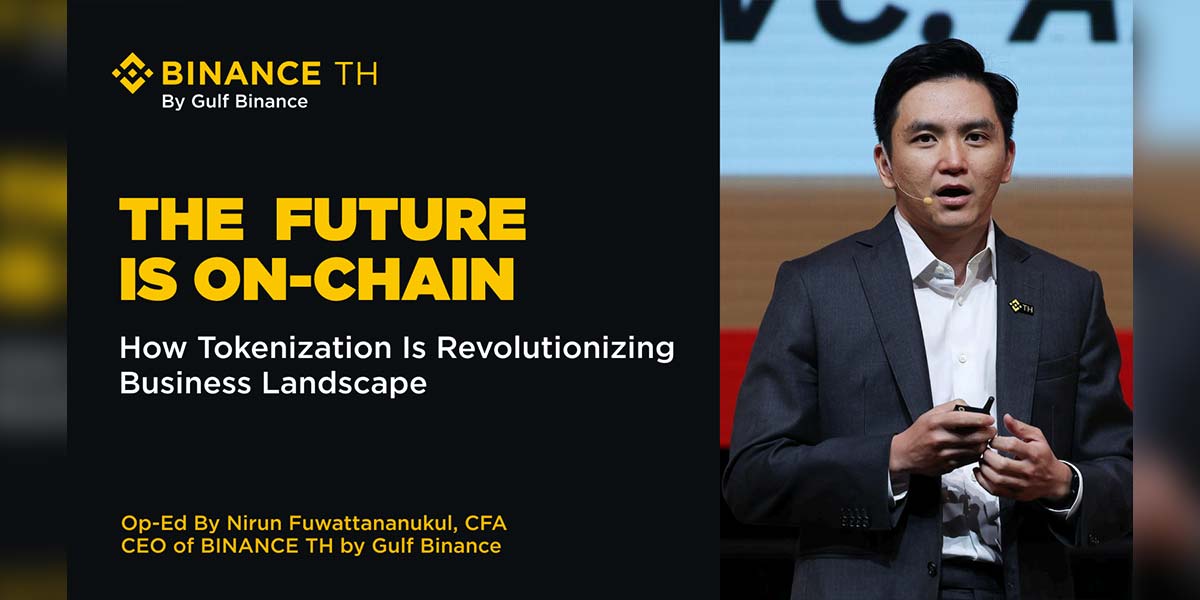The digital asset industry has gained strong momentum in recent years, with many Fortune 500 companies incorporating blockchain into their strategic agenda — a clear signal of growing confidence in this foundational technology. At a recent summit, I had the opportunity to speak on one of the industry’s most closely watched topics: Real-World Asset (RWA) tokenization. In a time when systems and assets are rapidly migrating on-chain, this emerging technology is poised to fundamentally reshape capital flows, industry structures, and the very logic of business itself.
Across sectors, businesses — whether startups or global incumbents — continue to grapple with three enduring challenges: accessing capital, unlocking asset value, and building sustained customer engagement. While these frictions are not new, they have become more pronounced in today’s fast-evolving digital economy. This is where tokenization, powered by blockchain, offers a potential alternative. By transforming physical and intangible assets into programmable digital units, it opens new avenues for liquidity, fractional ownership, and scalable, personalized engagement. What was once locked or illiquid can now move at the speed of the internet — with transparency, efficiency, and trust baked in by design.
Real-World Assets, Real-World Solutions
In fact, real world tokenization has moved well beyond the conceptual stage — its value is already being demonstrated across a growing number of industries. In real estate, for instance, tokenization allows high-value, traditionally illiquid assets to be fractionalized and opened to a broader base of investors. This not only boosts market liquidity and expands capital access, but also enables automation and near-instant settlement, improving operational efficiency and transparency. According to Deloitte, the global real estate tokenization market could reach $4 trillion by 2035 — a signal of the sector’s long-term potential.
Beyond real estate, tokenization is gaining traction in areas such as fine art, luxury goods, and even government bonds — breaking down barriers in markets that have long been exclusive. For businesses, this shift represents more than a new funding mechanism. It is a chance to fundamentally redesign how asset value is unlocked, and how customers can participate in ownership models that were once out of reach.
In short, tokenization offers four key advantages for businesses navigating today’s digital economy:
- Access: By fractionalizing ownership, tokenization makes high-value assets more accessible, lowering the entry barrier for investors who may have previously been priced out of traditional markets.
- Liquidity: Tokenization has demonstrated clear potential to improve the tradability of traditionally illiquid assets, creating a new — though still emerging — pathways for capital movement, particularly in markets where conventional liquidity channels have been limited or inaccessible.
- Efficiency: Transactions can be settled in near real-time, with immutable records and enhanced security embedded into the infrastructure — streamlining operations and reducing administrative overhead.
- Innovation: Businesses can design programmable, customer-centric models that drive deeper global engagement. By harnessing the borderless nature of blockchain, companies can build direct connections with international audiences — turning customers into aligned stakeholders who share in the brand’s long-term success.
Why Thailand Is Poised to Lead
This is no longer a distant global trend. Thailand is already shaping its own narrative in the tokenization of real-world assets. From Sansiri’s tokenization of its Siri Campus project, to the blockchain-based fundraising for the film Love Destiny, and even the issuance of government bond tokens — innovation is advancing across both the private and public sectors. With increasingly mature regulation and growing adoption of digital assets, I believe this on-chain transformation can continue to scale sustainably across the Thai digital economy.
In addition, Thailand has progressive regulation which has established one of the earliest regulatory frameworks for digital assets, a digitally savvy population eager to adopt new technologies, and a vibrant financial ecosystem supported by both traditional institutions and dynamic fintech startups. These factors uniquely position the country to become a regional leader in the tokenization space.
Balancing Opportunity and Responsibility
Indeed, every new paradigm faces challenges. For tokenization, regulatory clarity, robust infrastructure and products, as well as education and awareness, are key elements for its long-term success—especially in highly regulated financial markets. Additionally, ensuring that tokenized assets have good liquidity in the secondary market remains a critical challenge if we wish to move towards mass adoption.
With that being said, Thailand’s regulatory environment maintains an open and collaborative approach, actively engaging with industry stakeholders to explore diverse development opportunities. At the same time, platforms like BINANCE TH are dedicated to creating a secure and compliant environment, providing deep liquidity and a wide range of investment options for the public to access the digital asset ecosystem, while delivering comprehensive educational resources to support the sustainable growth of the entire sector.
Together, all stakeholders can foster innovation, build trust, and create a resilient infrastructure that accelerates market adoption, ensuring long-term benefits for the economy and society as a whole.
Looking Ahead
We are living in a time of great promise — and great disruption. As blockchain technology reshapes the foundations of financial infrastructure, staying informed and adaptable is no longer optional — it’s essential. Individuals, enterprises, and even nations that fail to engage with this shift risk losing relevance in a rapidly digitizing world.
At its core, tokenization is not just a technological innovation — it’s a tool for economic inclusion. It opens the door for broader participation, allowing everyone from everyday investors to small businesses to access and benefit from assets that were once out of reach. The future of finance is being built now — and the opportunity is open to those ready to participate.





